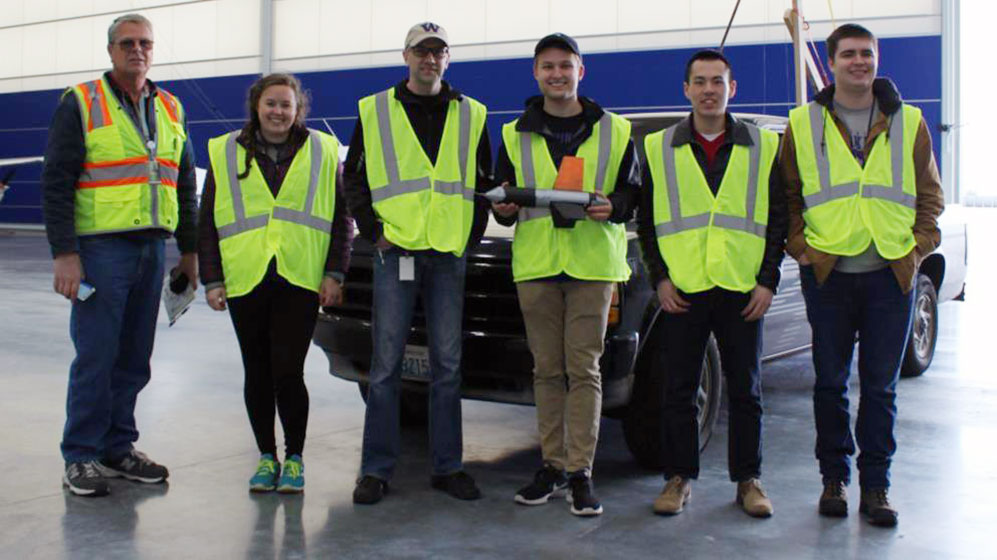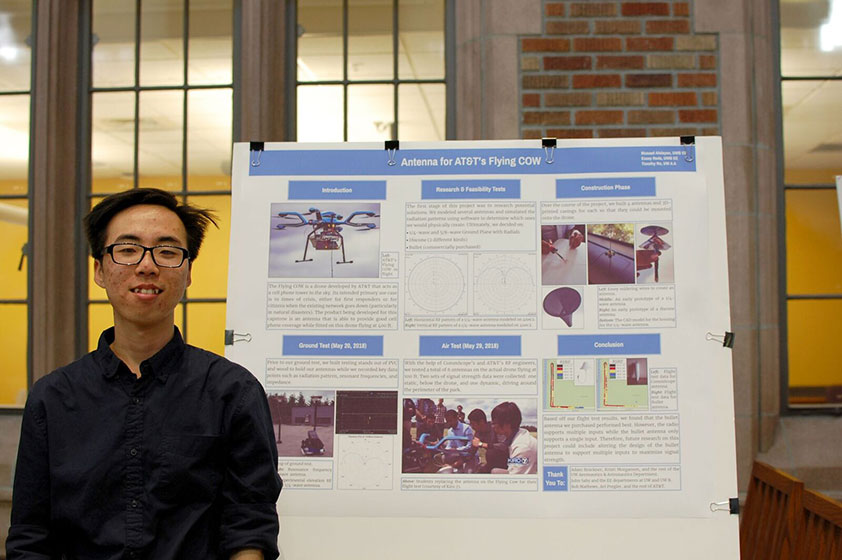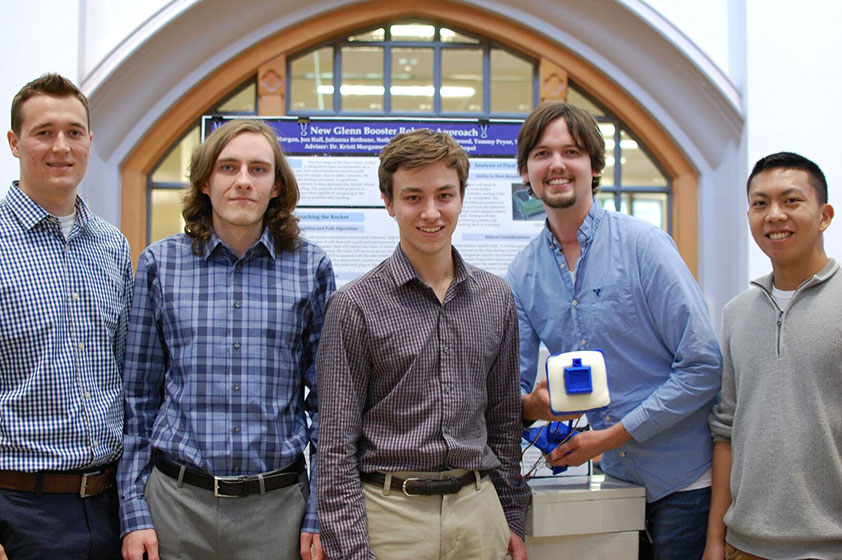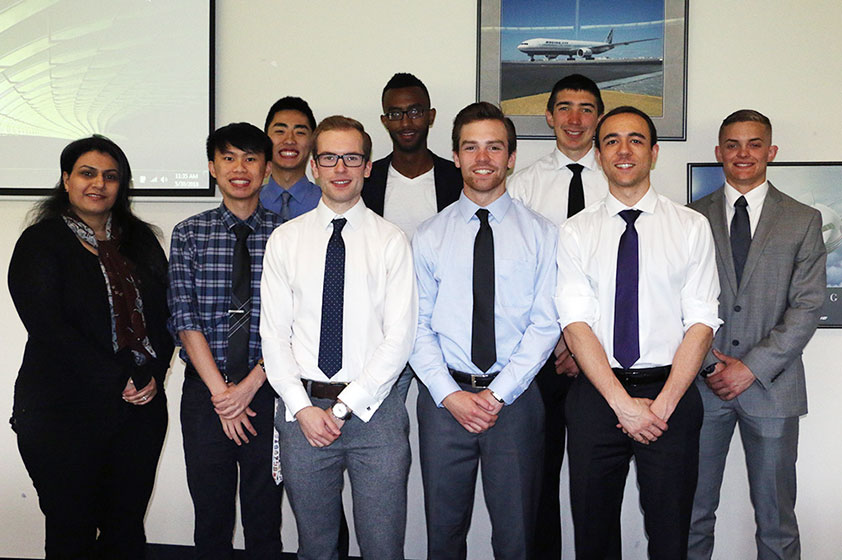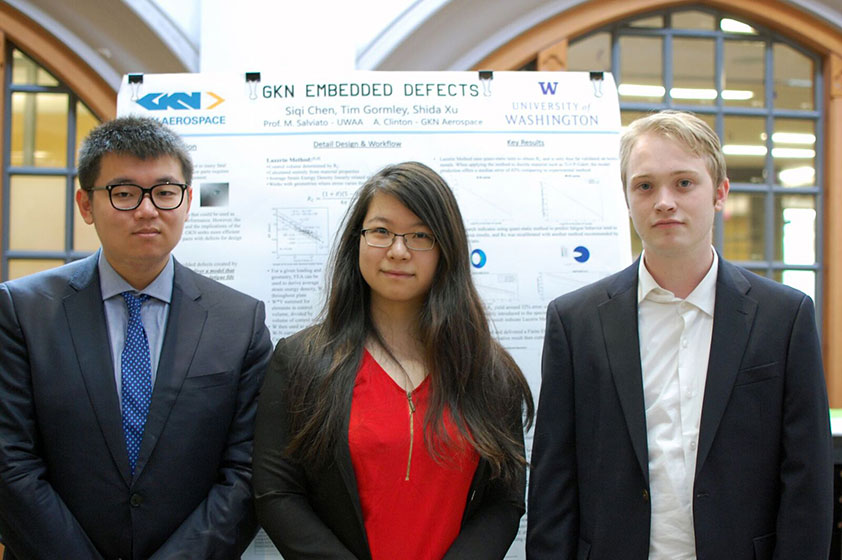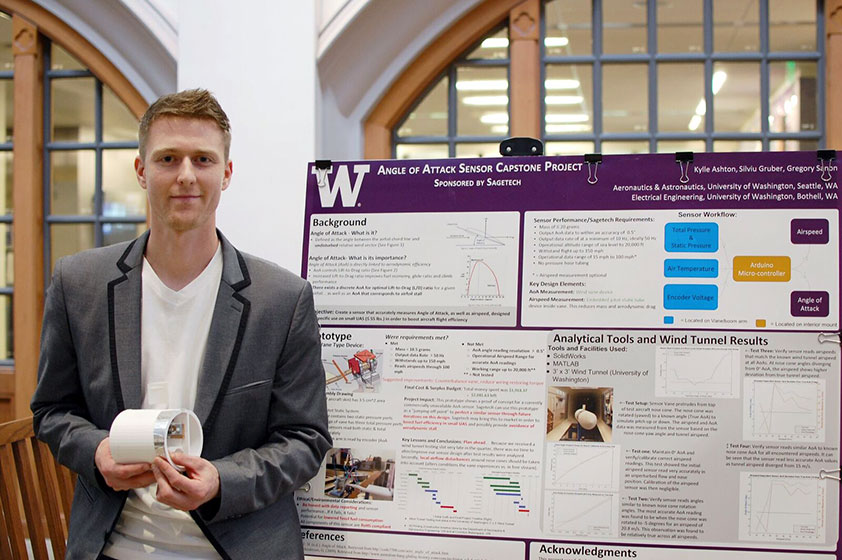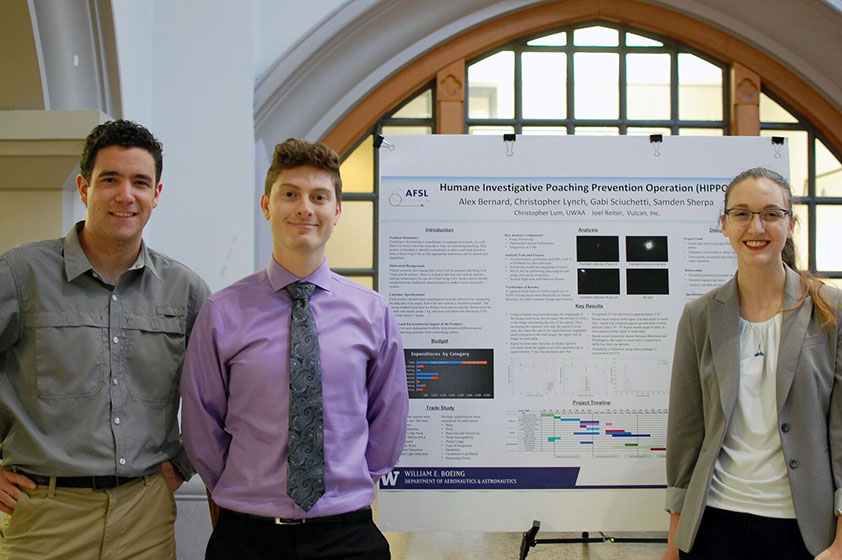AeroTEC
Trailing Pressure Measurement System
Laura Smit, aeronautics and astronautics
Kirby Taylor, aeronautics and astronautics
Bohao Zhu, UW Bothell, electrical engineering
One of AeroTEC’s main focuses is flight testing, and they are continuously looking for ways to improve the process. Trailing cones have long been used to measure static pressure accurately away from the local disturbances caused by the aircraft. Some issues with typical trailing cone systems are broken pressure lines, pressure lag, and position inaccuracies in dive conditions. The student team worked to develop a more accurate trailing cone system.
